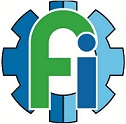Influence of adding a convex lens as a solar concentrator on the performance of solar cooker with an octagonal panel
Abstract
Keywords
Full Text:
PDFReferences
S. M. M. Ahmed, M. R. Al-Amin, S. Ahammed, F. Ahmed, A. M. Saleque, and M. Abdur Rahman, “Design, construction and testing of parabolic solar cooker for rural households and refugee camp,” Solar Energy, vol. 205, pp. 230–240, Jul. 2020.
A. Mostafaeipour, M. Behzadian, M. B. Fakhrzad, K. Techato, and F. Najafi, “A strategic model to identify the factors and risks of solar cooker manufacturing and use: A case study of Razavi Khorasan, Iran,” Energy Strategy Reviews, vol. 33, p. 100587, Jan. 2021.
T. Y. Yanuartanto, “Kompor surya menggunakan penyimpan panas dengan variasi ketinggian kompor,” skripsi, Sanata Dharma University, 2010.
K. Lentswe, A. Mawire, P. Owusu, and A. Shobo, “A review of parabolic solar cookers with thermal energy storage,” Heliyon, vol. 7, no. 10, p. e08226, Oktober 2021.
S. M. Ebersviller and J. J. Jetter, “Evaluation of performance of household solar cookers,” Solar Energy, vol. 208, pp. 166–172, Sep. 2020.
U. C. Arunachala and A. Kundapur, “Cost-effective solar cookers: A global review,” Solar Energy, vol. 207, pp. 903–916, Sep. 2020.
P. K. Gupta, A. Misal, and S. Agrawal, “Development of low cost reflective panel solar cooker,” Materials Today: Proceedings, vol. 45, pp. 3010–3013, 2021.
Ian Edmond, “Low cost realisation of a high temperature solar cooker,” Renewable Energy, vol. 121, pp. 94–101, Jun. 2018.
M.M Valmiki, Peiwen Li, Javier Heyer, Matthew Morgan, Abdulla Albinali, Kamal Alhamidi, and Jeremy wagoner, “A novel application of a Fresnel lens for a solar stove and solar heating,” Renewable Energy, vol. 36, no. 5, pp. 1614–1620, May 2011.
Yunsheng Zhao, Hongfei Zheng, Boyang Sun, Chenji Li, and Yin Wu, “Development and performance studies of a novel portable solar cooker using a curved Fresnel lens concentrator,” Solar Energy, vol. 174, pp. 263–272, Nov. 2018.
J. Perlin, “Solar Energy, History of,” in Encyclopedia of Energy, C. J. Cleveland, Ed. New York: Elsevier, 2004, pp. 607–622.
M. Marwani, “POTENSI PENGGUNAAN KOMPOR ENERGI SURYA UNTUK KEBUTUHAN RUMAH TANGGA,” Palembang: Fakultas Teknik Universitas Sriwijaya, 2011, pp. 85–94.
G Palanikumar, S Shanmugan, Chithambaram Vengatesan, and Selvaraju Periyasam, “Evaluation of fuzzy inference in box type solar cooking food image of thermal effect,” Environmental and Sustainability Indicators, vol. 1–2, p. 100002, Sep. 2019.
S. El Ayane and A. Ahaitouf, “Performance analysis of a ball lens as secondary optical element for a micro photovoltaic concentrator,” Energy Reports, vol. 8, pp. 1301–1313, Nov. 2022.
DOI: http://dx.doi.org/10.12962%2Fj24604682.v19i3.15551
Refbacks
- There are currently no refbacks.

This work is licensed under a Creative Commons Attribution-ShareAlike 4.0 International License.







